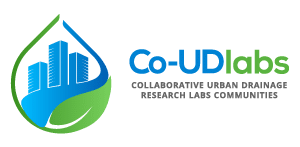Scientific publication: Towards non-contact pollution monitoring in sewers with hyperspectral imaging
Co-UDlabs project partner, EAWAG, with Oak Ridge National Laboratory and Headwall Photonics have published a paper in the Environmental Science: Water Research & Technology journal. This paper is available in open access.
Abstract
Monitoring water quality in sewers is challenging, particularly because state-of-the-art technologies require contact with the raw wastewater. The presence of fat, oil, grease and solids makes automated grab sampling difficult and causes sensor fouling. To overcome these limitations, non-contact methods based on light reflectance, such as hyperspectral imaging (HSI), are gaining attention. However, HSI has never been tested for raw wastewater. To assess its accuracy for measuring pollution, we developed a laboratory setup and performed targeted experiments with a combination of raw and diluted wastewater, as well as synthetic turbidity stock solutions. We measured seven pollution variables: chemical oxygen demand, turbidity, dissolved organic compounds, ammonium, total nitrogen, phosphate, and sulphates. We used automated pixel selection and partial least squares regression to retrieve pollution information from the hyperspectral images. Our results, based on 144 samples, suggest that HSI can estimate pollution levels with a precision in the range of state-of-the-art absorbance spectroscopy methods. Additionally, we found that the combination of pixel and wavelength selection, enabled by the hyperspectral data structure, significantly influences the performance of partial least square modelling. Overall, our findings indicate that HSI is a promising technology for non-contact monitoring of water quality in raw wastewater.
References
Ttile: Towards non-contact pollution monitoring in sewers with hyperspectral imaging
Authors: Pierre Lechevallier, Kris Villez, Christian Felsheim and Jörg Rieckermann
Cite as: Pierre Lechevallier, Kris Villez, Christian Felsheim and Jörg Rieckermann (2024), Towards non-contact pollution monitoring in sewers with hyperspectral imaging, Environmental Science: Water Research & Technology, DOI: https://doi.org/10.1039/D3EW00541K
